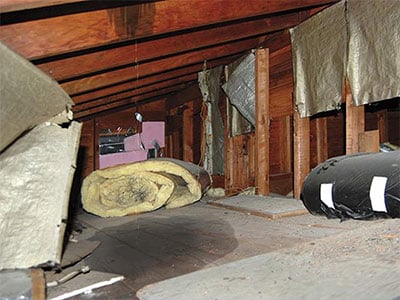Key Danger Signals
A leak in the attic.

Blistering or peeling interior or exterior paint.

Stains on interior ceilings and walls - mold or mildew growth.

Exterior decay in sheathing and/or siding.
Excess moisture can also contribute to decay.

Missing, cracked, or curled shingles.
Dry, cracked, or easily broken shingles have reached the end of their useful life, and its time to invest in a new roof.

Dark, dirty-looking areas on your roof.

Excessive energy costs.
Inadequate ventilation can possibly drive up your household cooling costs by trapping hot air in the attic. Attic moisture can also drip into your insulation, reducing its effectiveness.

How to Inspect for Damage
Why wait for the drip, drip, drip of a damaged roof Its a good idea to inspect your roof regularly, particularly if you live in areas of the country that experience extreme weather. You can inspect your roof yourself by either climbing on your roof or by using binoculars from the ground.
If you choose to go up on the roof yourself, remember to always utilize proper safety equipment to prevent falls or injury. See our Safety section for more details.
Here are some things to look for:
- Check flashing for damage or inadequate coverage
- Look under eaves and overhangs for damage
- Examine shingles for any that are missing, cracked, curled, torn, or warped
- Look for any open seams or joints
- Look for popped or rusted nails or stains around nails
- Look for signs of insects or critter infestation (squirrels love climbing on roofs)
- Check for sagging or unsound areas
- Check for rotten fascia and eaves
- Inspect your sources of roof ventilation to make sure they are not clogged
- Inspect gutters for sagging or signs of leaks and be sure to remove any leaves or debris
- Check for dark patches or biological growth
- Check around pipes and roof penetrations to make sure they are sealed and in good shape there shouldnt be any exposed nails around flashings (if so, they should be sealed)
- Look inside the attic for signs of leaks, dark spots, holes, or sagging sheathing
You can do all this yourself, but if youre uncomfortable with the idea of walking around on your roof or climbing a ladder in the first place, or you just want a professional inspection done, your best option is always to find a GAF factory-certified Master Elite Contractor near you.